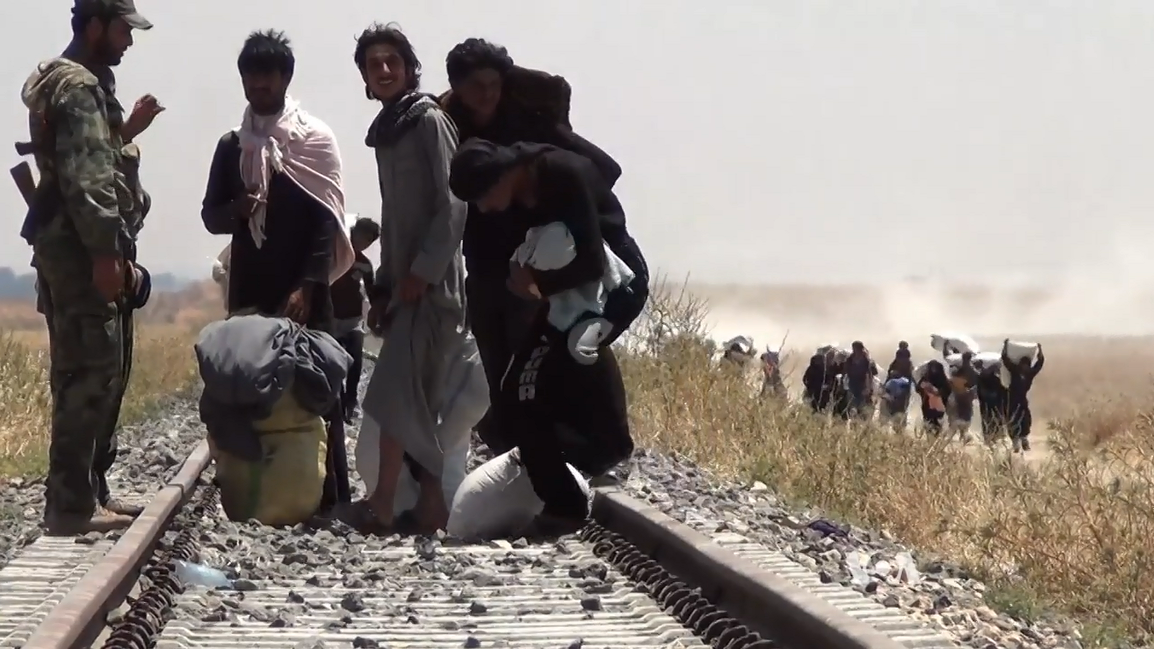The Protection of Civilians (PoC) expands the responsibility of the UN Security Council (UNSC) for international peace and security to the internal affairs of conflict-ridden countries. As such, it bolsters the authority of the five permanent members (the P5) in world politics and presents them with a flexible tool for exercising this authority. In reply to the question “what’s in it for them”, in this blog post we argue that in addition to shaping their responses to situations like Syria and Libya, the principle of PoC shapes the very dynamics of the Council itself, and ultimately the decisions of conflict actors anticipating international responses.

Syrian civilians returning to Tell Abyad, 2015. PHOTO; Creative Commons
The difference in the international response to the twin crises that erupted in Libya in 2011 (to which the UNSC responded with a firm resolution) and Syria in 2012 (where a state of civil war continues in the absence of any Security Council protection resolution) offers a useful entry point to the question of ‘protection’ as it is understood and acted upon in the UNSC. Protests in both countries flared up within the wider context of the Arab Spring upheavals across the Middle East/North Africa region from late 2010. In both cases the Libyan and Syrian authorities responded with force, leading to a sharp escalation of the violence. The subsequent responses of the international community, however, could scarcely have been more different.
In the case of Libya, the international community responded with condemnation and, between February and March 2011, with two clear Security Council Resolutions (SCRs). The first (SCR-1970) condemned the violence and called on the ‘government of Libya to meet its responsibility to protect its population’. That was followed in March by SCR-1973, which explicitly forbade foreign forces on Libyan soil, but also affirmed the international community’s right to use ‘all necessary means’ in its ‘determination to ensure the protection of civilians’. The Council was responding to reports that around 1000 civilians had been killed in the fighting at that point. While affirming Libya’s ostensible sovereignty, it also authorised military support by NATO for a ‘humanitarian’ intervention, short of occupation or regime change. That mission – Operation Protector – assisted the protestors turned-opposition forces, culminating in the NATO airstrike that unseated Gaddafi’s convoy on October 20, 2011.
In Syria the following year, protestors were far more reluctant to take up arms than they were in Libya, and yet international offers of protection were less forthcoming. According to one source, ‘the local coordinating committees and other opposition elements maintained a strong commitment to non-violence for months, despite brutal regime violence’. Yet whereas in the case of Libya the Security Council passed its resolutions authorizing military support with the abstention of Russia and China (which was taken at the time as a step forward for the protection agenda), it was only a relatively shor- lived advance. With what they eventually saw as a failure by NATO to comply with the limits to the mandate, Russia and China subsequently opposed any similar interventionist response to the crisis in Syria.
This development – resolute action in Libya but gridlock over Syria – has been interpreted by some as the maturation and sudden death of PoC in the Security Council. Certainly some suggest that the PoC agenda is suffering from a ‘Libya trauma’ as a result of the ‘mission creep’ in Libya and the impact this had upon China and Russia’s future approach to the Security Council. Yet, as we suggest in a new policy brief, it is not evident that this blow to the political momentum of PoC has been fatal. This would presuppose that the difference in mandates over Libya and Syria reflects a fundamentally changed stance on the principle of PoC as such. Rather, it’s all a question of what PoC means to the permanent members of the Security Council in particular, both as individual nations and as a collective agent of political order.
Note: This entry is a preview of the authors’ policy brief ‘What’s in It for Them? Why the Veto Powers All Support Protection of Civilians (And Why They Often Fail to Agree on It’ (2016), published by PRIO and an output from the project Protection of Civilians: From Principle to Practice. You can read this policy brief here.